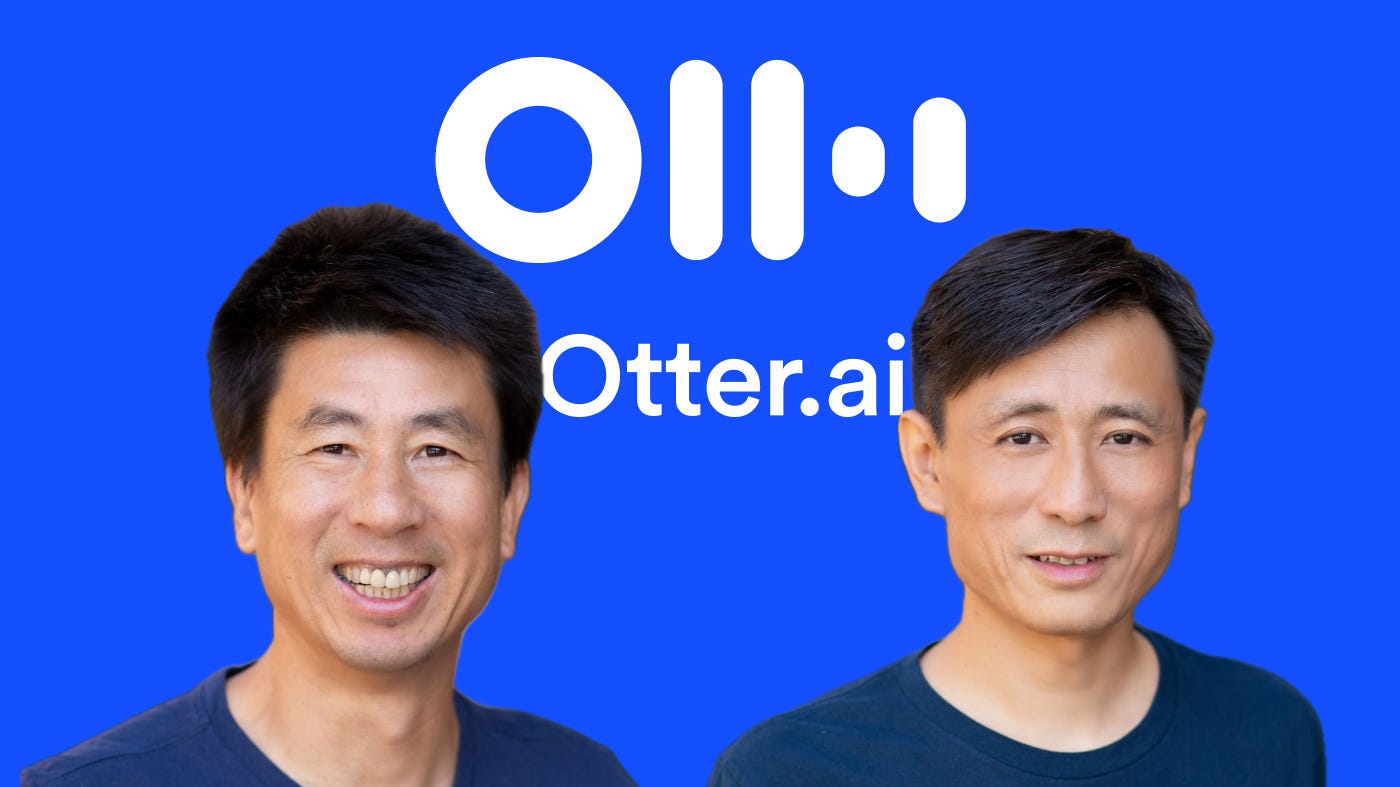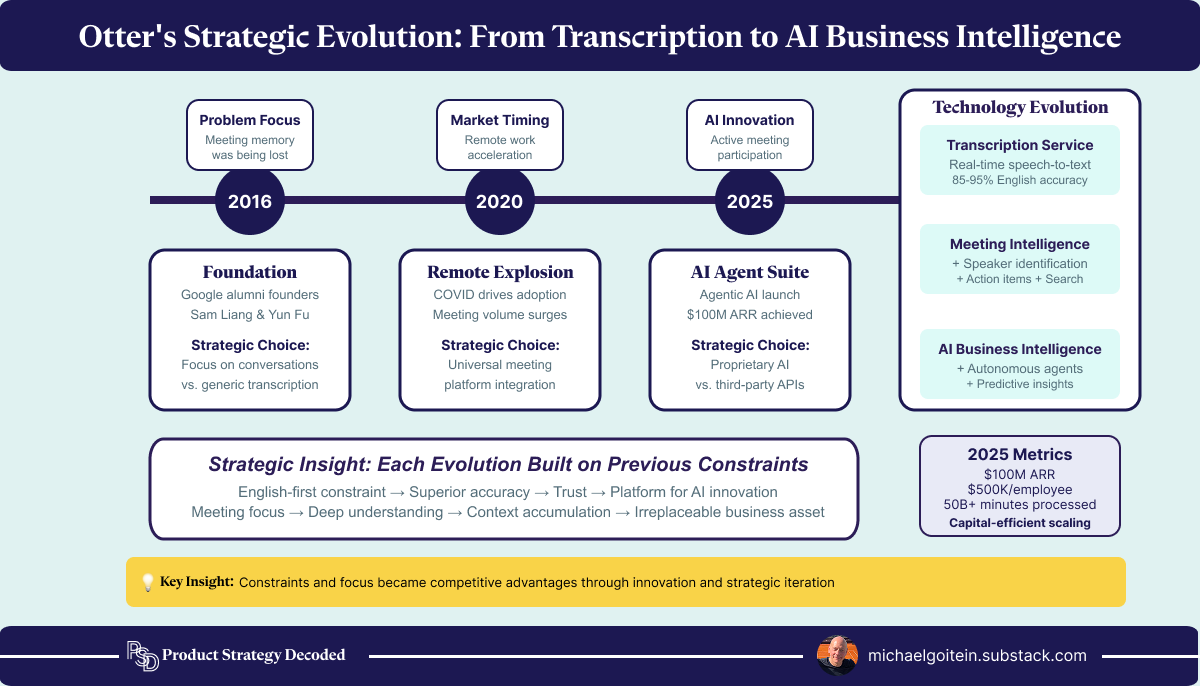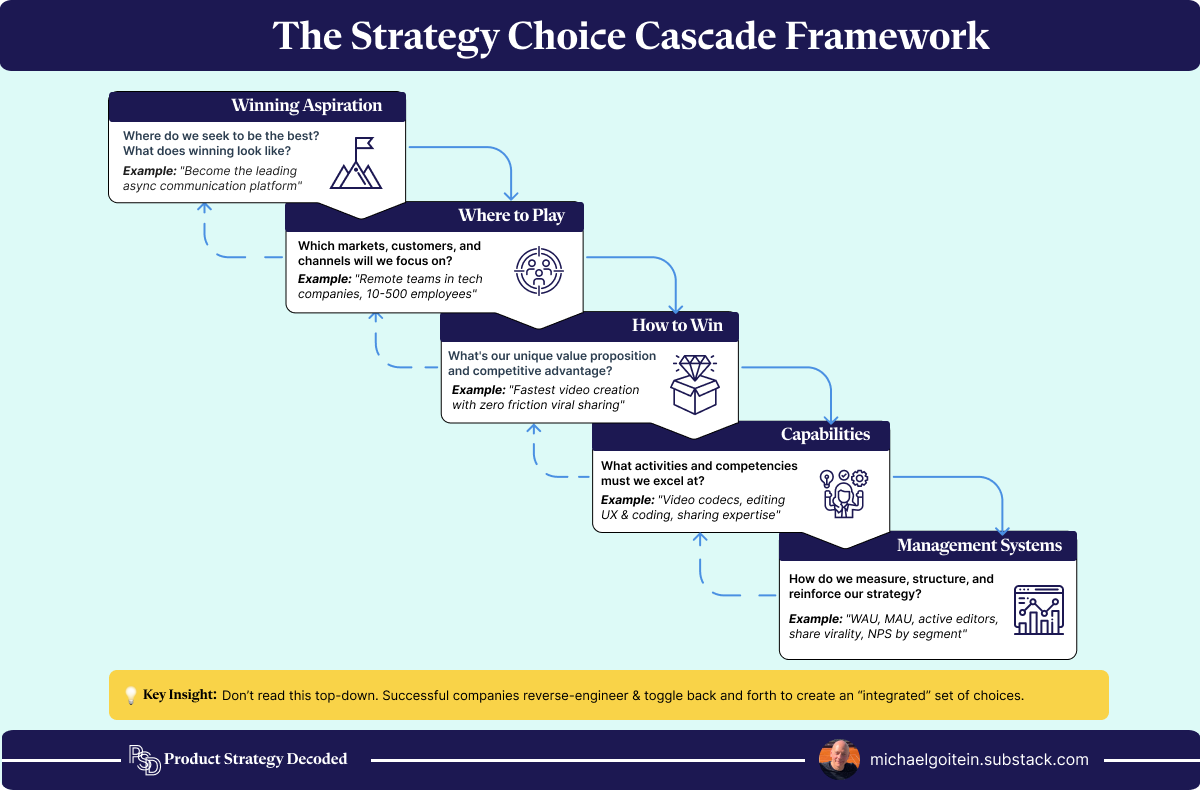How Otter's AI Product Strategy Dominates By Creating Unexpected Value And A Totally New Organizational Asset Class
The strategic power of permissionless value creation and focus to build deeper moats than any technical feature alone ever could

Hey everyone–Mike here. Welcome to another reverse-engineered strategy deep dive of Product Strategy Decoded.
Here’s a few recent editions you might have missed:
The Human-Machine Writing Strategy for Content That Converts
How Shopify's AI-First Mandate Turbocharges Its Already Unbeatable eCommerce Strategy
The Product Strategy Notion Uses to Hide The Next Software Revolution Inside A Productivity App
Consider subscribing or upgrading to get the full strategies behind today’s most successful tech products.
While the hottest venture-backed AI startups hemorrhage cash trying to figure out how to better “wrap” GPT-5 or overcharge for tokens in their onramp to product-market fit, Otter.ai made a contrarian set of bets to quietly build a $100M business by taking a different path.
MRI Software’s story offers a great example of Otter’s strategy at work. When the real estate software sales company faced the challenge of managing knowledge across complex 1-2 year sales cycles, Solutions Architect Dana Cutter knew standard transcription tools wouldn't cut it.
Cutter’s team of 26 needed to coordinate information about 165 products across 170+ countries and 45k+ clients without losing critical context.
“I didn't want an app just for note-taking. I wanted that transcript in an interconnected hub of knowledge.”
The Otter Pilot
Soon after Cutter kicked off his Otter pilot, he was blown away by how quickly Otter drove real value right out of the gate.
After just 2.5 weeks, the pilot team began seeing ROI, with $150,000 annual savings and 20 minutes reclaimed per meeting. New team members absorbed months of context in minutes instead of weeks. Subject matter experts could answer client questions without attending meetings, dramatically accelerating sales cycles.
This allowed Cutter to expand MRI’s Otter rollout across the entire North American sales engineering team based on proven results, not promises.
"I love Otter because it's agnostic. It can work with any industry, any segment, any role, where conversations are driving a sale.”
Dana Cutter, MRI Software.
By turning any conversation into searchable business assets, Dana Cutter’s experience shows Otter’s competitive advantage in action.
Why This Matters to Product Leaders
Otter.ai’s choices reveal a striking example of how product strategy is changing in the AI era.
While most AI companies raced to add features and languages, Otter.ai deliberately limited its focus and went deep to build a lasting moat.
Their strategy offers three critical lessons for product leaders:
How to create adoption without requiring organizational consensus
How to build moats through accumulated knowledge rather than network effects
How strategic focus accelerates growth rather than limits it
As AI capabilities commoditize, these positioning principles become more valuable than technical advantages. Because Otter shows that winning isn't about having better AI, but about applying AI within strategic boundaries that competitors can't easily copy.
From Forgotten Meetings to AI-Powered Business Intelligence
To understand how Otter built this permissionless value machine, let's trace their evolution from simple transcription to AI-powered business intelligence.
Otter’s Google Origins
Founded in 2016 by Google alumni Sam Liang and Yun Fu, Otter.ai emerged from a clear problem: too much valuable meeting information was being lost, despite frantic note-taking.
Otter made a strategic choice early on to focus exclusively on conversational intelligence in multi-speaker, real-time meeting environments where accuracy and context matter most.
This choice aligned perfectly with their "Where to Play" strategy, targeting the massive professional meeting market, rather than competing in the commoditized transcription services “red ocean.”
Otter’s Strategic Pivot
The company's most significant evolution came with 2025’s launch, transforming Otter from a passive transcription service into an active AI meeting participant.
While competitors built on top of third-party APIs, Otter chose to go the harder path of developing proprietary AI infrastructure, processing over 1 billion meetings to create an unmatched training dataset.
Choosing to strategically invest heavily in owned technology versus renting capabilities enabled its breakthrough 2025 innovations, exemplifying its "How to Win" strategy of moving from simple documentation to proactive business intelligence to make meetings more productive.
Otter’s Latest Innovation Suite
Otter's March 2025 product launch represented a fundamental shift toward agentic AI, (AI that acts by itself on our behalf instead of waiting to be prompted), moving beyond passive transcription to active participation in business processes.
The new AI Meeting Agent suite includes three specialized agents:
The flagship Meeting Agent for voice-activated meeting participation
The Sales Agent for real-time coaching and CRM integration
The SDR (“Sales Development Representative”) Agent for fully autonomous product demonstrations
Otter validated its strategic choice to prioritize proprietary technology over third-party dependencies and conversational intelligence over generic transcription by maintaining remarkable capital efficiency ($500K+ revenue per employee),
This evolution from a meeting memory aid to an AI-powered business intelligence platform demonstrates how their core strategic choices drove the breakthrough innovations that competitors will struggle to replicate.
Reverse-Engineering Otter’s Strategy Using the Strategy Choice Cascade
What choices did Otter make to build its AI-powered competitive advantage?
To decode the choices enabling Otter’s success, we’ll reverse-engineer them using Roger L. Martin's "Strategy Choice Cascade" framework.
Winning Aspiration: Searchable Conversations at Scale
Otter.ai's winning aspiration is to make every spoken word as searchable, actionable, and valuable as written text.
Otter’s choices go beyond transcription excellence and meeting intelligence platforms to fundamentally transform voice from an ephemeral communication into persistent, searchable knowledge.
The company's true strategic intent is to become the memory layer for all professional conversations, creating a new organizational asset from previously lost information.
Success for Otter means that in 3-5 years, searching "what did the CEO say about pricing strategy" across all company meetings becomes as easy as searching in Gmail.
Where to Play: Depth & Focus
Otter.ai made four counterintuitive “Where to Play” choices that define their strategic position:
Geographic Constraint as Accelerator: Deliberately limiting to English-speaking markets (only adding French/Spanish in late 2024) allowed it to focus. This constraint enabled them to achieve 85-95% accuracy in English while competitors, spread thin across 50+ languages, continue to be hampered with mediocre performance in each.
Horizontal Breadth Over Vertical Depth: While competitors like Gong specialized in sales or Descript in content creation, Otter.ai chose the harder path: serving all meeting types across all industries. This created lower initial monetization but is steadily building a larger eventual moat through universal applicability, something MRI Software’s Dana Cutter directly cited in his purchase decision.
The "Unclaimed Middle" Strategy: Otter created a new “Goldilocks” category of "good enough accuracy with immediate availability" that didn't previously exist. Not too expensive like Rev's premium human transcription (at $1.50/minute), not too basic like Zoom's free built-in tools, but just right for professionals who need better than free but don't need letter-perfect.
Usage-Based Customer Segmentation Progression: Instead of targeting specific segments, Otter designed a funnel where customers gladly upgrade from free to paid once they see the full potential of building their conversational data store.
These “playing field” choices set up how they “win” with customers.
How to Win: Unexpected Value Through Permissionless Presence
Otter.ai wins through "quiet presence." It’s reassuring for the person they’re transcribing on behalf of, yet unobtrusive for everyone else.
Otter wins through three connected approaches:
1. Workflow Insertion Without Permission: The genius of the "OtterBot joins your meeting" model is that it requires only one participant's consent to provide value to all. This breaks traditional SaaS adoption friction, where everyone must agree before anyone benefits.
2. The Trojan Horse Strategy: Free transcript distribution to all meeting participants (including non-customers) appears generous but is strategically brilliant. Each shared transcript is product marketing that can't be ignored, creating 7.5 touched users per meeting with near-zero acquisition cost.
3. Value Creation Through Accumulation: Each meeting transcribed makes the next meeting more valuable through searchable history. After 10 meetings, switching costs emerge. After 100 meetings, the accumulated knowledge becomes irreplaceable.
This powerful compound knowledge strategy only works if you have the technical chops to execute it reliably.
Otter built three specific capabilities that make their strategic positioning possible.
Capabilities: The Integration Trio
Otter.ai's sustainable advantage comes from three mutually-reinforcing capabilities that competitors will struggle to replicate simultaneously:
Real-Time Processing Architecture: Otter’s focus on live meeting understanding allows it to automatically identify speakers, capture slide screenshots, extract action items, and enable in-meeting chat. In a classic example of strategy passing the “Can’t/Won’t” test, by training its models on 50+ billion minutes of training data, Otter has built an insurmountable data moat.
Global and Frictionless Meeting Entry: The calendar integration and auto-join functionality seem simple, but required years of engineering to work reliably across Zoom, Teams, and Meet simultaneously. Most competitors chose one platform; Otter.ai chose all.
Ambient Intelligence Layer: Beyond transcription, Otter.ai builds connected understanding across conversations over time to identify patterns and surface insights. OtterPilot isn’t a stenographer; it’s an active participant that can answer questions and complete tasks.
These capabilities create a reinforcing loop that accelerates Otter’s leadership.
But only if they structure and measure for the right things…
Management Systems: Metrics That Drive Strategy
Otter.ai's management systems align perfectly with their other strategic choices through three critical decisions:
Metric Alignment: Success is measured by cumulative meeting minutes processed (50+ billion), not by seat count or revenue. This single “North Star” metric drives product decisions toward usage depth over user breadth, creating a flywheel effect through its generous free tier and viral sharing with all meeting participants.
Organizational Design for Speed: Similar to the “talent density” we saw driving Notion’s success, Otter’s ability to achieve $100M ARR with less than 200 employees allows it to move faster and more nimbly than larger organizations. And its 4.8/5 Glassdoor rating and 99% recommendation rate indicate a sustainable, intentional, and people-focused approach.
Capital Efficiency as Competitive Advantage: Achieving $500K revenue per employee with only $63 million in total funding demonstrates discipline. While competitors raise hundreds of millions and dilute equity and autonomy through repeated funding rounds, Otter.ai's capital efficiency gives it strategic flexibility, It can pivot, experiment, and innovate for the long-term without needing to answer to short-term-focused venture-backed pressure.
What Product Managers Can Learn From Otter's Playbook
Otter.ai is winning not through smarter algorithms, but through making a smarter set of strategic trade-offs beautifully tailored to the new advantages AI makes possible.
By investing in its own models and infrastructure, and focusing them on the right areas, Otter’s choices seem counterintuitive until you realize the simple fact of how they’ve created a bootstrapped, $100M business. This simple, powerful, and integrated approach offers a valid alternative for AI product teams struggling to build sustainable competitive advantage.
I’ve broken out three actionable takeaways from Otter’s reverse-engineered strategy you can apply regardless of your product’s AI sophistication or industry.



